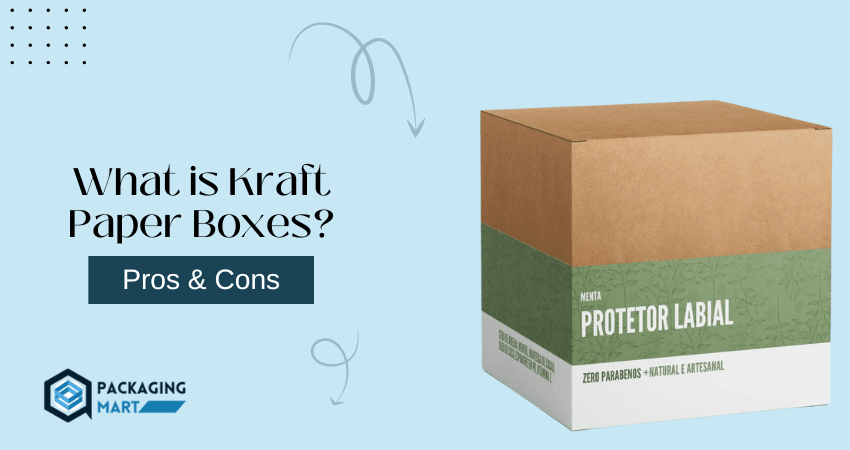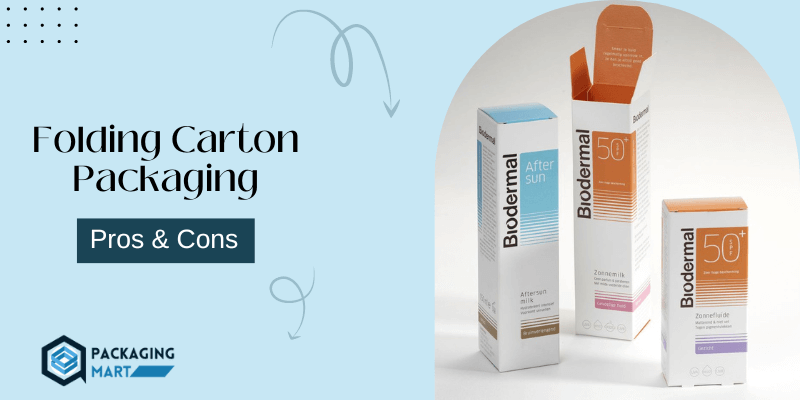Kraft paper is becoming an increasingly popular option for eco-friendly packaging, but what exactly is it? While it may not seem like anything extraordinary at first glance, this natural material is incredibly versatile and can be used for an impressive variety of applications. Whether you’re looking to wrap a gift or create artwork, Kraft paper will help you get the job done quickly and efficiently.
In this article, we’ll explore what is Kraft paper and what are the unique properties of Kraft paper that make it so special for packaging. And we’ll also discuss some disadvantages of using Kraft paper as opposed to other materials. So let’s dive in!
What is Kraft Paper and What Makes it So Popular?
Kraft paper is a type of paper created from wood pulp and high-strength chemical pulping processes. It was developed in Germany during the late 19th century by Carl F. Dahl and became known as Kraft paper due to its strength. It is used in many applications, including packaging, wrapping, printing, writing and construction.
Kraft paper can be unbleached or bleached to create different shades of white. Bleaching the paper often results in a weaker product, so unbleached Kraft paper is often preferred for packaging and wrapping.
Kraft paper is strong, flexible and tear-resistant, making it suitable for a variety of uses. It has good water resistance, holding up to wet conditions without becoming brittle or falling apart. This makes it ideal for storing products.
What are some of the unique properties of Kraft paper that make it so popular for packaging and shipping products?
There are a few benefits that make Kraft paper an ideal choice for packaging and shipping products.
- Kraft paper is strong and resistant to tearing and puncturing, making it ideal for protecting items during shipping.
- It is moisture-resistant, meaning that it won’t absorb moisture from the environment or the products it is the packaging.
- It has a neutral pH level, making it less likely to cause any damage to the product inside.
- It is lightweight and easily foldable, making it an economical choice for packaging products.
- It is also biodegradable and recyclable, allowing companies to reduce their environmental impact when using Kraft paper for packaging and perfect for kraft boxes manufacturing.
- The natural color of Kraft paper gives a rustic look which is popular for certain products and can be easily customized with printing.
- It has an inherent strength due to its air-filled pockets, which makes it more resistant to punctures and other types of damage during shipping.
- Kraft paper is also less expensive than many other packaging materials such as plastic or foam. These cost savings can be passed on to the customer.
- Last but not least Kraft paper can also be used as filler material in boxes or packing containers, helping to keep products secure during transit.
Benefits of Using Kraft Paper
Here are some of the unique benefits of choosing durable packaging:
- Reusable and Recyclable: Durable packaging is usually made from materials such as polypropylene, polyethylene and other plastic resins that are 100% reusable and recyclable. This means that the packaging can be used multiple times without having to be replaced, while also being recycled at the end of its life cycle.
- Reduced Carbon Footprint: The production process for durable packaging generates less carbon dioxide than other packaging materials, reducing the number of CO2 emissions that are released into the atmosphere. This helps to create a cleaner, greener environment for everyone.
- Cost-Effective: Durable packaging is often more cost-effective than traditional options because it can be used multiple times without having to be replaced.
- Enhanced Product Protection: Durable packaging provides superior protection for products, ensuring that they reach their destination in perfect condition. This makes it an ideal choice for transporting fragile items such as electronics and medical supplies.
- Shelf-Life Extension: The use of durable packaging can help to extend the shelf life of products by protecting them from heat, moisture and other environmental factors.
By choosing durable packaging, you can reap the unique benefits of increased product protection, cost savings and a reduced carbon footprint. This makes it an ideal choice for businesses looking to be more eco-friendly while also protecting their products during transit.
Disadvantages of Using Kraft Paper
Yes, there are some disadvantages to using Kraft paper:
- Kraft paper is not as strong and durable as other materials such as plastic or corrugated cardboard.
- Kraft paper is not heat resistant, so it should not be used for items that need to be stored in a hot environment.
- Kraft paper is more susceptible to moisture and can become weak when exposed to wet conditions.
- Kraft paper also tends to be less costly than other materials but can be more expensive if you are looking for specific colors or finishes.
- Kraft paper can be more difficult to print on, so if you are looking for a specific design or logo, it may require additional cost.
- Kraft paper can also be more difficult to work with as it is thicker and less pliable than other materials. This makes it more challenging to cut and shape into the desired size or shape.
- Kraft paper also tends to tear or rip easily, so it may not be the best choice for items that require a lot of handling or need to be reused multiple times.
- Additionally, Kraft paper offers minimal protection against ultraviolet rays, making it a poor choice for outdoor applications.
- Finally, Kraft paper is not as easily recyclable as many of the more durable options available.
Ultimately, the decision to use Kraft paper over other materials should depend on the specific needs and preferences of your business.
What industries use Kraft paper most often and why is it a preferred choice for them?
Kraft paper is widely used in a variety of industries due to its excellent strength and durability.
1) Packaging industry
In the packaging industry, Kraft paper is often preferred because it provides superior protection during transit while also being strong enough to resist tears or punctures. Additionally, Kraft paper is available in a range of thicknesses and grades, allowing users to choose the right material for their needs.
2) Construction industry
In the construction industry, Kraft paper is often used as an insulator or vapor barrier when applied on walls or ceilings. Its strength and durability make it ideal for protecting against mold and other potential damage. Kraft paper is also often used for construction joints and as a reinforcement material for concrete structures.
3) Industrial sector
In the industrial sector, Kraft paper is frequently chosen due to its flame-retardant properties and resistance to oils and other chemicals. It can also, be easily molded or cut into shapes that make it suitable for use as a wrapping material such as ecofriendly wrapping paper, gaskets and even as an insulator in electrical applications.
4) Arts and crafts industry
The arts and crafts industry also takes advantage of Kraft paper’s versatility. It can be used to create sculptures origami and other decorative items.
Overall, Kraft paper has become popular in many industries due to its durability, strength and versatility. It can be used in various applications and provides excellent protection against weather and other environmental factors.
FAQs – Kraft Paper
Is kraft paper eco friendly?
Kraft paper is eco-friendly because it is made from unbleached, recycled materials that use fewer resources and less energy to be produced than other types of paper. It also uses natural dyes and coatings that are biodegradable and recyclable.
Kraft paper is also a renewable resource, meaning it can be recycled or reused in other ways. Further, Kraft paper is compostable and can help create soil health by returning valuable carbon and nutrients to the environment. All these factors make Kraft paper an eco-friendly choice when compared to other types of paper.
Can you use Kraft paper for food packaging?
Yes, Kraft paper can be used for food packaging. It is strong enough to stand up to wet or greasy foods and has a high tear resistance. It is also FDA-approved, making it safe for storing food items. The natural brown color of Kraft paper makes it an eye-catching choice when branding products and displaying them on store shelves.
In addition to its strength and visual appeal, Kraft paper is also cost-effective and environmentally friendly, making it a great option for food packaging.
How durable is Kraft paper?
Kraft paper is extremely durable and can often outperform other types of packaging materials. It has excellent water resistance and puncture resistance due to its strong fibers that are tightly bound together.
Kraft paper also possesses great tensile strength, meaning it can resist being stretched or pulled apart without breaking. Consequently, it’s great for storing and shipping items that need to remain protected, like food products or electronics. Additionally, Kraft paper is resistant to grease and oil which makes it an ideal material for wrapping sandwiches or other greasy foods.
Final Words
Kraft paper is a type of paper that is made from wood pulp. It is brown and has a rough texture. Kraft paper is used for many different things such as wrapping presents, making bags and even crafting.
So, there you have everything you need to know about Kraft paper. This biodegradable and recyclable material is perfect for a huge range of packaging applications, from retail products to food service. So why not give Kraft paper a try. You may be surprised at just how versatile it is.


